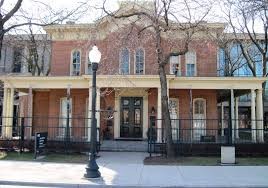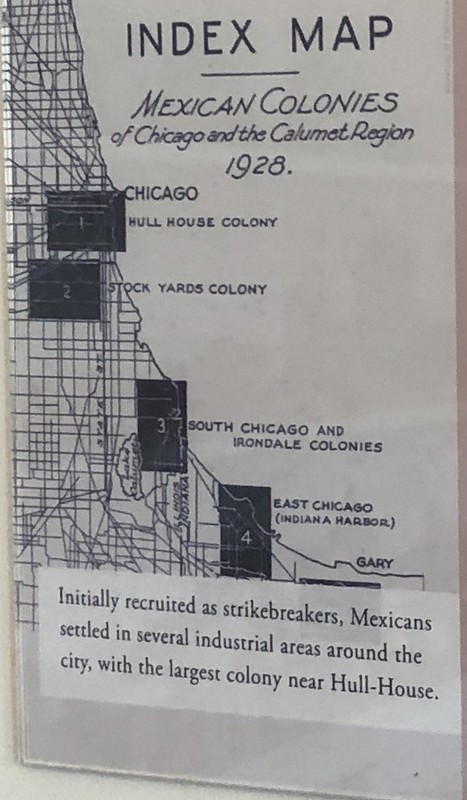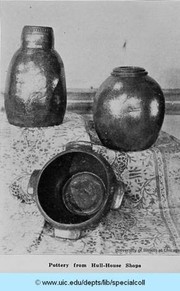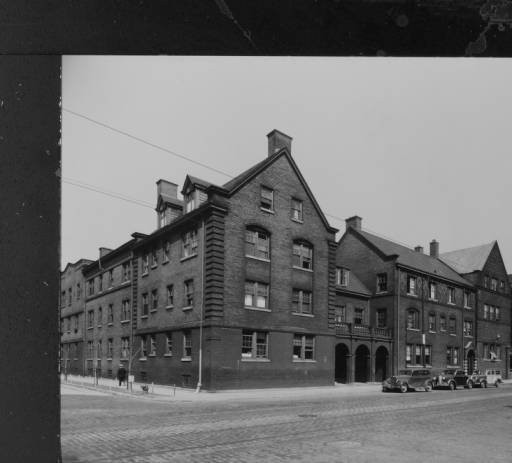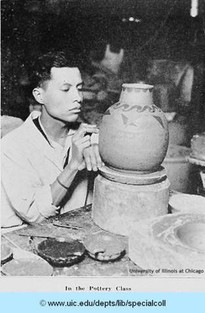Jane Addams was born in Cedarville, Illinois on September 6, 1860, and graduated from Rockford Female Seminary in 1881. As an exemplary student and leader, she was known to be a force to be reckoned with. After a trip to London, she rented, with her friend Ellen Gates Starr, a worn-down mansion that would become the world famous social settlement Hull-House. Settlement houses in America, like Hull House, were part of a larger trend seen in the first settlement houses of London, which were originally founded for middle to upper-class women and men to live in poorer neighborhoods closer to the city as a way to experience urban life. Addams and Starr drew inspiration from Toynbee Hall in London that provided recreational and educational programs to the surrounding neighborhood as well as its residents. During Hull House’s beginning, the neighborhood was comprised of immigrants from Italy, Ireland, Germany, Greece and other European countries. The residents at Hull House offered services such as daycare and classes in English and citizenship to this working-class community. The Immigrant Protection League (IPL) was founded by the Hull House residents in 1908 where they advocated for the protection of the rights of immigrants. The Hull House also provided a common space for trade union groups and working-class clubs like the Jane Club for single working girls to meet.
After World War I, the neighborhood experienced a demographic change. The passage of the 1921 Emergency Quota Act and the 1924 National Origins Act restricted the number of immigrants from Southern and Eastern Europe but not from the Western hemisphere. This led to a sudden availability of new jobs in railroad, meat packing, and steel industries, which led to Mexicans migration into the neighborhood. They soon became the dominant immigrant group in the neighborhood. Although Hull House already advocated and supported immigrant groups, this changing demographic still had an impact on the type of services that it offered. New groups emerged that used Hull House as a common space such as Mexican dance troupes like the Azteca and the Cuauhtėmoc and mutual benefit associations like the Sociedad Hispana, which encouraged Mexican-Americans to not give up their Mexican identities. The IPL began to focus on Mexican repatriation as an issue in the 1930s and fought against the illegal raids and deportation the U.S. made against Mexicans. Hull House suddenly became a space for embracing Mexican culture and allowed for these new immigrants to form a community, as well as a new identity.
Art was one of the main services that the residents provided to their new community. In 1927, the Hull House Kilns were established by Myrtle French, a trained ceramist, to teach pottery to community members and provide a market for artists to sell their art. These classes were seen as an escape from industrious life and to celebrate crafting skills. When the Mexican people began to take these classes, some, particularly those from the central regions of Mexico which has a strong tradition in pottery, were quick-learners and soon enough, had a club of their own. It was established by Myrtle French to encourage community building within the Mexican population of Hull House, most of whom did not speak English. Pottery became a way for the immigrants to connect with their Mexican identity, especially those from the central regions like Michoacán, Guanajuato, and Jalisco. Famous students that took these classes at Hull House included artists Jesus Torres and Miguel Juárez. Juárez’s interest in pottery came to him at a depressed point in his life as he had lost his leg at his workplace and could neither read nor write, which make it difficult for him to find a job. However, at Hull House, he was able to become a mentor to other artists and sell plenty of his work. The same could be said for Jesus Torres, who at first went to Hull House for English courses, but eventually went on to take ceramics classes at the Kilns and made an income in selling his pottery.
Many of the migrants from Mexico came to the United States to flee from the Mexican Revolution. They had only known their country to be fragmented with no unifying identity. Therefore, while the Mexican-American identity was developing in Chicago, the Mexican identity was developing in Mexico as well. Hull House was a main connection between Mexican-Americans and Mexico as many people on the board had visited Mexico and formed relationships with Mexican nationalists. Although Hull House was a part of bringing the Mexican migrants together, there were difficulties in the community in how they should identify themselves as either fully Mexican, fully American, or a combination of both. Hull House contributed to the development of a polar identification (Mexican or American, not both), which can be seen in the communities choosing to identify with a post-revolution Mexicanidad due to a refusal to be fully American. It made it all the easier for those who returned to Mexico, but not for those who stayed in America, who continued to struggle to define their identity, which would eventually lead to the rise of the Chicano movement.
For those who stayed in Chicago, the struggle continued in other areas as well. As a part of Chicago’s urban renewal plans during the early 1960s, construction of the University of Illinois at Chicago campus would take place in the same neighborhood where Hull House was located, a majority immigrant community. Therefore, the settlement house needed to close its doors and relocate. However, residents and community members did not do this without a fight. It took a settlement of $675,000 and a case that went all the way to the Supreme Court in order for relocation to happen. However, it did happen, and it led to the dispersal of the settlement house services across Chicago and the displacement of the Mexican residents into Pilsen, a neighborhood with currently one of the highest concentration of Mexican-Americans in Chicago. The Hull House organization ceased its services in 2012 due to rising costs and a decrease in fundraising, but the original house with the dining hall still stands in the UIC campus as a museum.
Hull House facilitated the continuation of Mexican identity and culture through the arts and helped to bring together the Mexican-American community in Chicago. Despite the residents' polar identification of Mexican immigrants, Hull House was a settlement house that truly addressed the changing demographics of its community. It is a part of a larger story of settlement houses in the United States and the cultivation of Latinx identity in Chicago. It is the story of changing demographics and an example of adaptation, rather than resistance, to change that we should take to heart. Furthermore, the Museum and its many vibrant programs make connections between the work of Hull-House residents and important contemporary social issues. Hull-House played a vital role in redefining American democracy in the modern age. Addams and the residents of Hull-House helped pass critical legislation and influenced public policy on public health and education, free speech, fair labor practices, immigrants’ rights, recreation and public space, arts, and philanthropy. Hull-House has long been a center of Chicago’s political and cultural life, establishing Chicago’s first public playground and public art gallery, helping to desegregate the Chicago Public Schools, and influencing philanthropy and culture.From Hull-House, where she lived and worked until her death in 1935, Jane Addams built her reputation as the country's most prominent woman through her writing, settlement work, and international efforts for peace.
